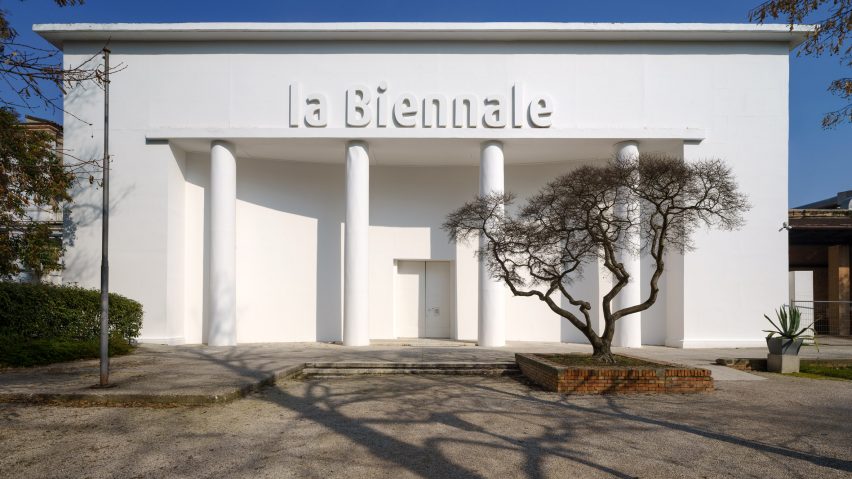
Visitors share their impressions of "interesting and courageous" Venice Architecture Biennale
With the Venice Architecture Biennale now open to the public, attendees have given their verdict on the first major cultural event to take place since the pandemic began.
"It was interesting and very courageous," architect Stefano Boeri told Dezeen. "And how important it is for Venice to say that the biennale is still alive. It was so, so great to see the public there."
Biennale theme fits into current "fragility"
Curated by Hashim Sarkis, the theme of this year's biennale is "How will we live together?"
"The title was decided before [the pandemic] but it was perfectly fitting in the fragility that we see nowadays," Boeri added.
"It's a very peculiar biennale, where sometimes the perspective is coming from other disciplines such as psychology, anthropology and environmental sciences, instead of a typical disciplinary point of view."
"But why not? I like it."
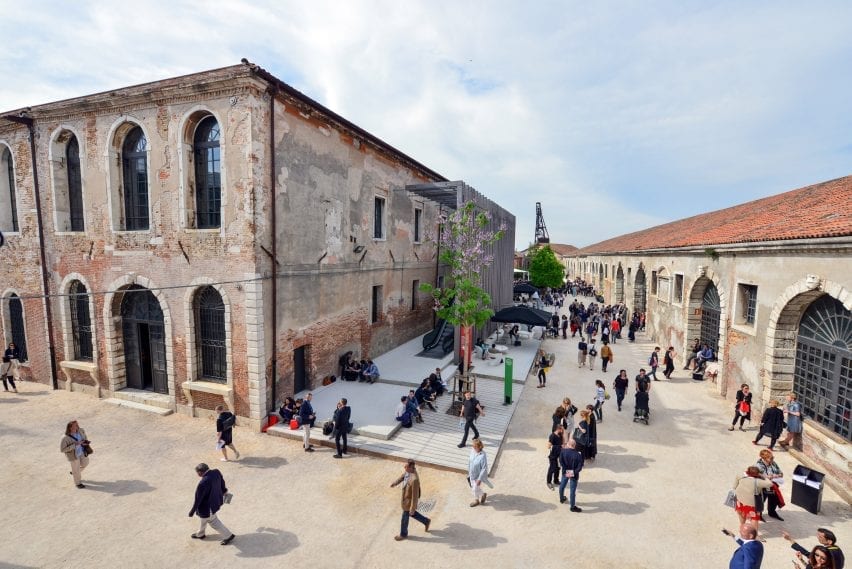
Sarkis has used the biennale to explore ideas for "a new social contract" that will allow people to live together in future.
"I believe very strongly that the central questions of politics are no longer in politics, and that they have migrated or have always been implicitly somewhere else," he said in an interview with Dezeen ahead of the opening.
"So therefore I'm hoping that we can find answers to this question through architecture."
Aim for more diversity
Sarkis has called on a more ethnically and geographically diverse range of contributors than previous editions and featuring fewer of the usual big names.
Despite this, Sarkis himself admitted the biennale "could be doing better" to showcase diversity.
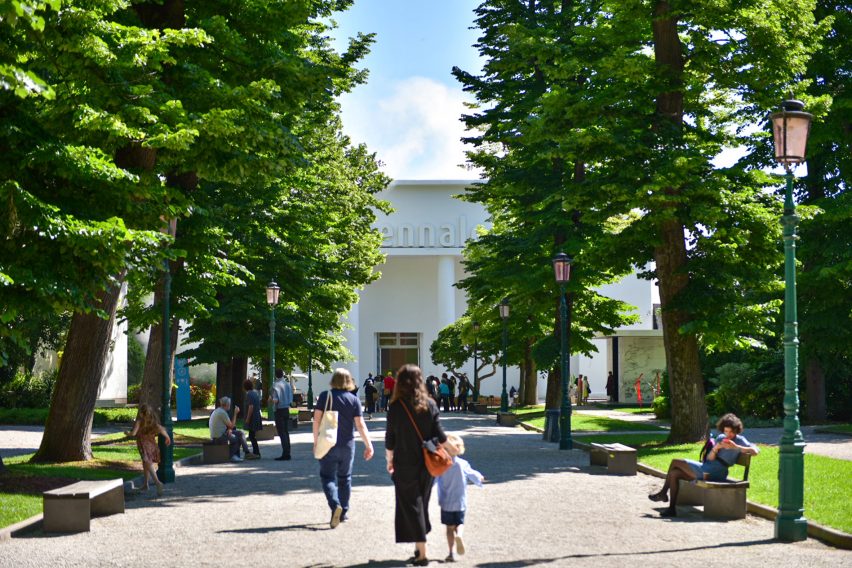
His main exhibition in the vast Arsenale complex is widely seen as a success. However, the Giardini, which features 29 national pavilions plus the central pavilion, which is also curated by Sarkis, has been less favourably reviewed.
"Hashim Sarkis’s exhibition in the Arsenale is very well curated: it moves from an understanding of how fluid ideas about the self actually make new social relations and hence new architecture possible," said architecture writer Tim Abrahams on Twitter.
"Central Pavilion a bit of a mess but it always is," Abrahams added.
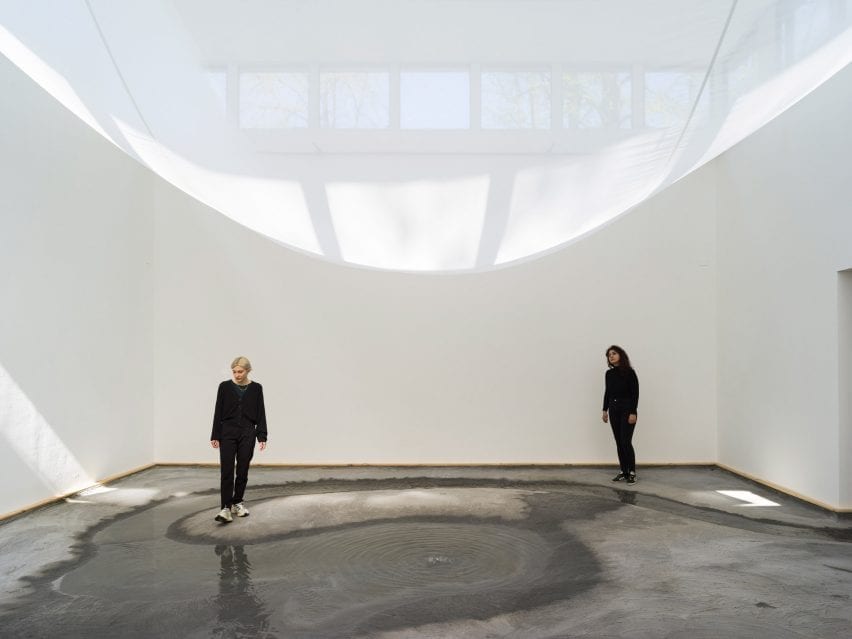
With the biennale postponed from 2020 due to the pandemic, there was a palpable sense of excitement during the preview days, with many visitors seeing friends and attending a cultural event for the first time in over a year.
"Venice in these days of the Biennale was vibrating with the energy of more people than I expected, considering the situation we were living in Italy a few weeks ago," said design curator Valentina Ciuffi, who is co-founder of Milanese design platform Alcova and founder of Studio Vedèt.
"People seemed happy to be there and to finally experience something together."
Arsenale exhibition features "cultural mixing"
"I feel like a child and everything I see is so exciting," said design journalist Laura Traldi.
"I also very much like the cultural mixing [of the Arsenale exhibition]," she added. "It’s not just architecture, it’s not just design; it’s lots of art and science."
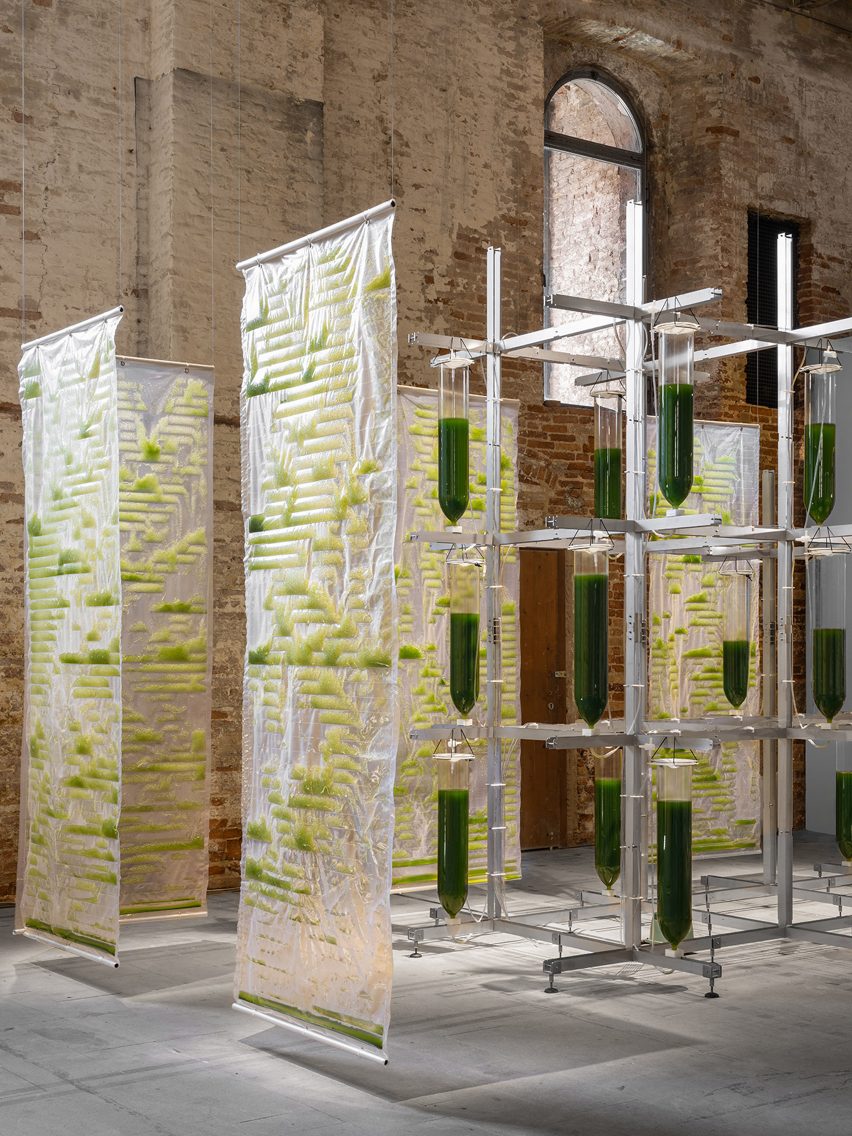
Leopold Banchini of Leopold Banchini Architects was one of many who was relieved to be experiencing architecture in the flesh rather than via a screen.
"I’m really impressed now to see that there’s so much public," said the architect, who is exhibiting in the Arsenale.
"I have to admit I had doubts that we’d be able to do such an opening so I think it’s amazing," he added. It seems to be the first moment that a lot of people are able to meet again and discuss architecture."
"I have to say that for me being here is so enriching. I’m not a big online guy so if I don’t have these kinds of events I don’t get the same kind of inputs."
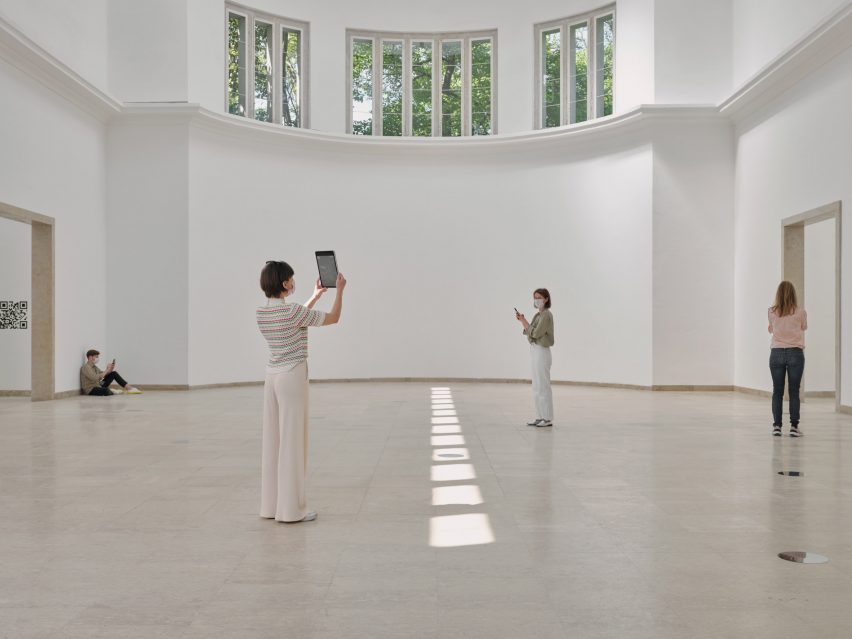
The logistical headaches thrown up by the pandemic are particularly visible in the Giardini, where the Canadian, Chinese, Australian and shared Czech and Slovak pavilions remain shuttered.
Others have defaulted to freight-friendly fabrics, 2D imagery and projected movies.
Controversial German pavilion focuses on digital
The German pavilion has caused the most controversy by presenting QR codes on the walls of an otherwise empty building. Visitors scan the codes on their smartphones to access a series of movies depicting life in 2038.
"A weak idea made worse by what I think is a widespread digital fatigue and yearning for the real," said Tim Abrahams.
But architect Lina Ghotmeh thought the pavilion was "really funny".
"I think it's provocative," she said. "You ask yourself: is this what we need to do now, when we have this digital world that opens up to us, and we shouldn't waste materials?"
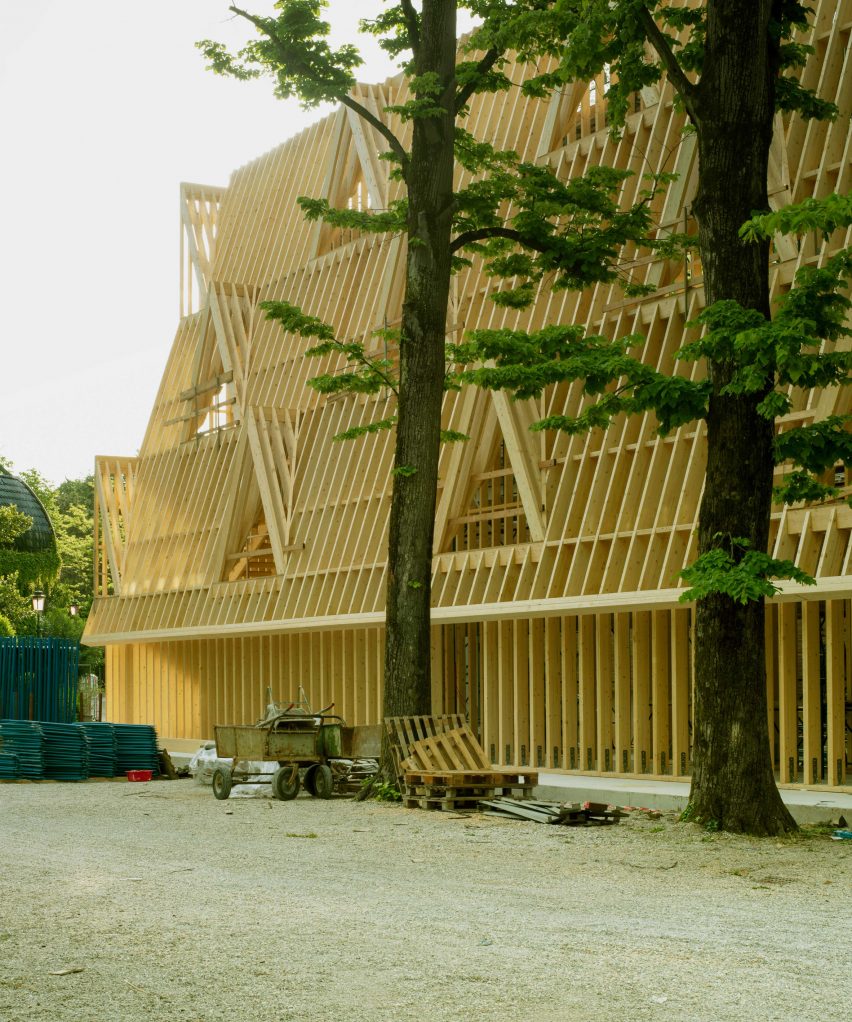
The most popular national pavilion is the USA's, which eschews technology and theory entirely and instead presents an exhibition about timber-frame construction signalled by a four-storey pine structure that visitors can climb.
"The United States pavilion is a very simple piece of wood," said Nicola Delon of Encore Heureux Architectes. "It says that architecture is just cutting trees and putting the cut trees together to make shape and form."
"It's strong," Delon added. "It's so far from the bullshit of parametric architecture, which is not the future."
Project descriptions ridiculed online
The visceral immediacy of the US pavilion contrasted with the verbose and often incomprehensible printed descriptions dotted throughout the Arsenale, which have been widely ridiculed on social media.
"It's always the challenge as exhibitors," said Lina Ghotmeh. "How do you relay the message immediately? And that's difficult."
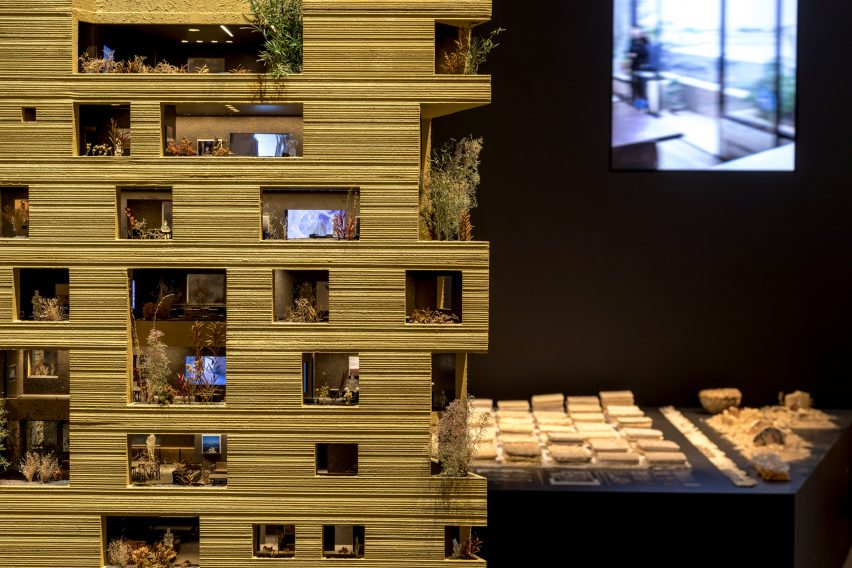
Ghotmeh is showing her Stone Garden apartment complex in the Arsenale, presenting the Beirut tower in the form of a large model.
"With all the complexity that we have to deal with, I think we have to push ourselves as architects to give [people an] immediate experience, even if it's a very complex field," she said.
"It's like a building,' she added. "When you build something, you don't need to stand by it and explain it to people".
Most will experience 2021 edition digitally
With the trajectory of the pandemic still uncertain, biennale visitor numbers are expected to be significantly lower than the 275,000 who attended the 2018 edition.
This means that most people will have no choice but to experience the 2021 edition via a screen.
"We have been struggling for more than a year to find new ways to exhibit virtually," added Valentina Ciuffi.
"We are finally fine-tuning some good tools. We could exploit the progress we made to spread the knowledge online and make real exhibitions less didactic and more able to stimulate us in a full way."
The Venice Architecture Biennale takes place from 22 May to 21 November 2021. See Dezeen Events Guide for details of how to attend the event, as well as a list of other architecture and design events taking place around the world.